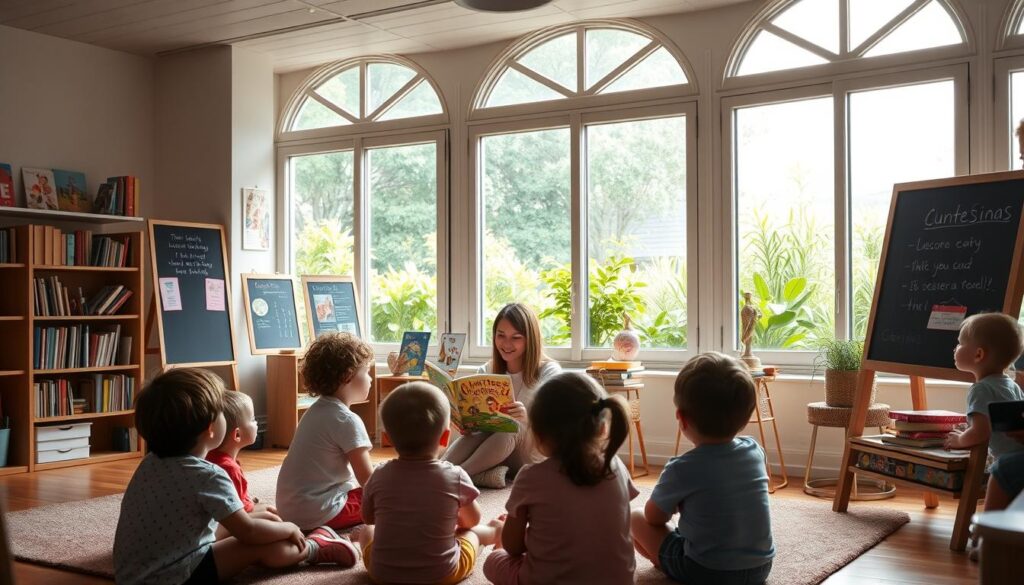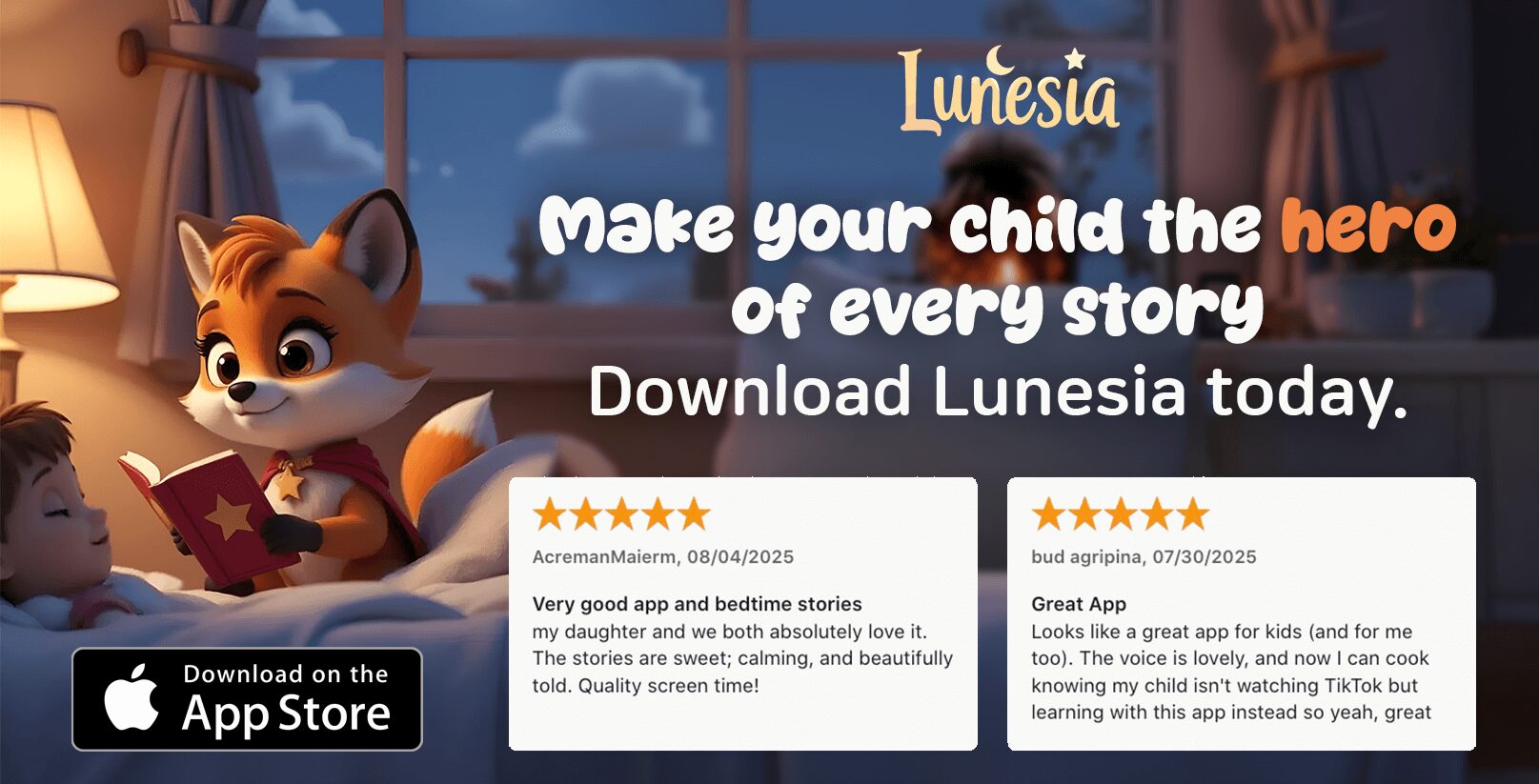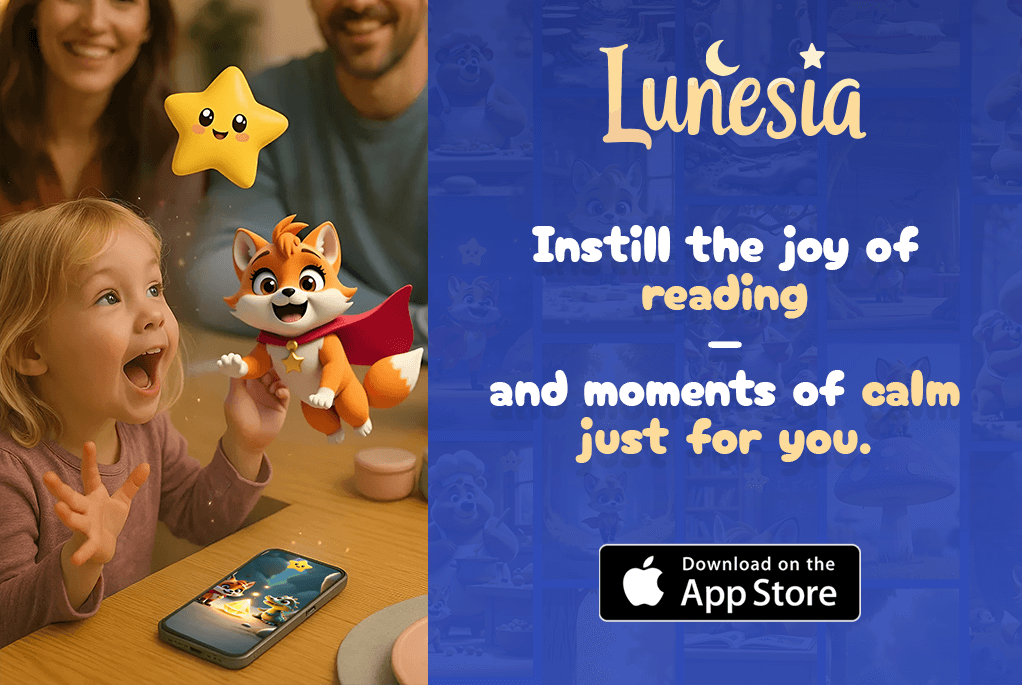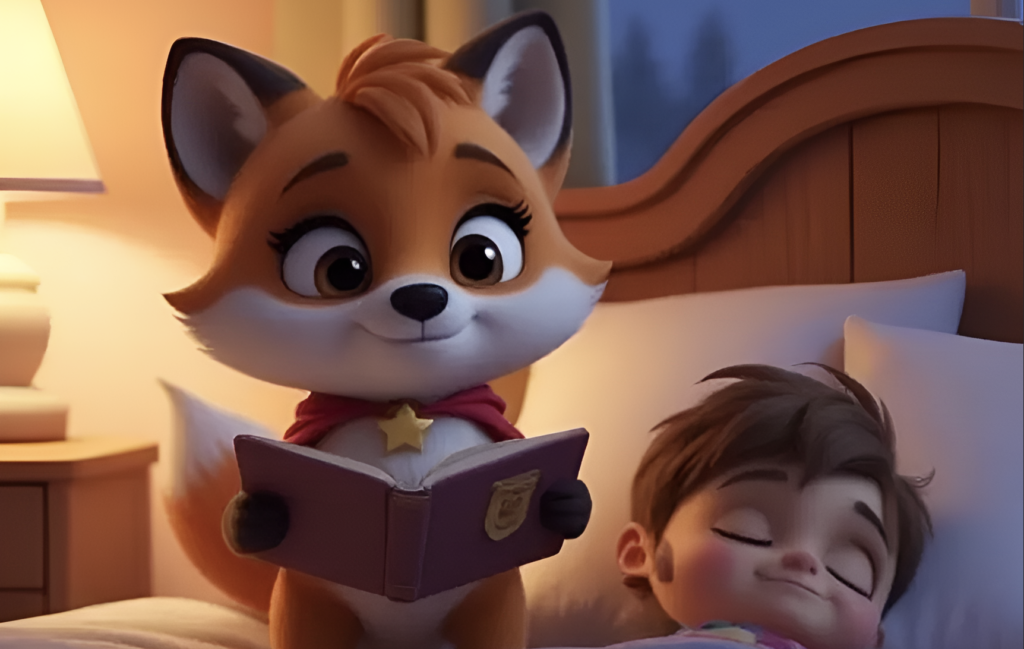As a parent, choosing the right educational path for your child can be a daunting task. You’re not alone in wondering if Lunesia is the right fit for your homeschooling preschool journey. With so many options available, it’s essential to consider what makes a curriculum truly effective for early learning.
Investing in your child’s education is not just about the cost; it’s about laying the foundation for a lifelong love of learning. Lunesia’s approach to homeschool preschool aims to foster this love by creating a engaging and interactive learning environment. But what sets it apart, and is it the right choice for your child?
In this comprehensive guide, we’ll explore the benefits and implementation of Lunesia, helping you make an informed decision about your child’s educational journey.
Understanding Lunesia’s Approach to Early Learning

As a parent, you’re likely curious about how Lunesia’s homeschool curriculum can support your child’s early learning journey. Lunesia is designed to be a comprehensive and engaging program for preschoolers, focusing on developing essential skills through a structured yet flexible approach.
What Lunesia Offers for Preschool Education
Lunesia’s preschool education program is rich in content, offering a variety of lessons that cater to different aspects of a child’s development. From reading and math to motor skills, Lunesia provides a well-rounded curriculum that prepares your child for future academic success.
The program is designed to be engaging, using stories, activities, and crafts to keep young learners interested and motivated. By incorporating different teaching methods, Lunesia ensures that children can grasp concepts at their own pace.
The Philosophy Behind Lunesia’s Teaching Method
At the heart of Lunesia’s teaching method is a philosophy that emphasizes the importance of following a child’s lead in their learning journey. This approach recognizes that every child develops at their own age and pace, and it’s crucial to adapt the curriculum accordingly.
Lunesia’s method is built on the principle that learning should be a positive and enjoyable experience. By making education fun and interactive, Lunesia aims to foster a love for learning that will last a lifetime.
Age Recommendations and Flexibility
Lunesia is generally recommended for children around the age of 4. However, the program is designed to be flexible, accommodating children who may be slightly younger or older. If your four-year-old isn’t grasping the concepts, it’s recommended to wait months and try again, ensuring that they’re developmentally ready.
The flexibility of Lunesia’s approach means that it can be adapted to suit different developmental timelines during the preschool years. This ensures that every child can benefit from the program, regardless of their individual learning pace.
The Benefits of Lunesia for Homeschooling Preschoolers
As we explore the benefits of Lunesia for homeschooling preschoolers, it’s clear that this program offers a comprehensive approach to early learning. Lunesia is designed to provide a well-rounded education that goes beyond academics, fostering a love of learning in young children.
Building Strong Reading Foundations
Lunesia’s curriculum places a strong emphasis on building reading foundations through engaging and interactive lessons. By incorporating alphabet phonetic sounds and interactive animal picture discussions, Lunesia makes learning to read a fun and enjoyable experience for preschoolers. This approach not only helps children develop their reading skills but also instills a love for reading that can last a lifetime.
The program’s focus on phonetic awareness and alphabet knowledge lays the groundwork for future reading success. As a parent, you can reinforce these lessons by practicing phonetic sounds with your child and encouraging them to identify letters and sounds in their everyday environment.
Developing Essential Math and Motor Skills
In addition to reading, Lunesia also provides a solid foundation in math and motor skills. The program’s number recognition activities and practical counting exercises help children develop their math skills in a engaging and interactive way. Lunesia’s craft projects also play a crucial role in developing fine motor skills, hand-eye coordination, and creativity.
By incorporating these activities into your homeschooling routine, you can help your child develop essential skills that will benefit them in the long run. As a parent, you can support your child’s learning by participating in these activities and providing guidance and encouragement.
Parent-Child Bonding Opportunities
One of the unique benefits of Lunesia is the opportunities it provides for parent-child bonding. The program’s guided activities and shared learning experiences encourage parents to participate in their child’s learning, creating meaningful moments of connection and interaction. By engaging in these activities together, you can strengthen your relationship with your child while supporting their educational development.
For example, you can interact with your child during lesson time, discussing animal pictures and practicing alphabet phonetic sounds together. This not only makes learning more enjoyable for both of you but also models a love of learning that your child can absorb and emulate.
Getting Started with Lunesia Homeschooling Preschool

Embarking on the Lunesia homeschool preschool journey requires some preparation, but with the right guidance, you’ll be well on your way to creating a nurturing learning environment for your child. The key is to understand the essential components that make Lunesia effective and how to integrate them into your daily routine.
Required Materials and Resources
To start, you’ll need to gather the necessary materials and resources recommended by Lunesia. This includes the curriculum guide, activity sheets, and any specific educational tools or supplies suggested for each lesson. Having these materials organized and within reach will help streamline your homeschool preschool experience, making it more efficient and enjoyable for both you and your child.
It’s also worth noting that Lunesia is designed to be adaptable, so you can adjust the materials and resources based on your child’s needs and your teaching style. This flexibility is one of the program’s strengths, allowing you to tailor the homeschool preschool experience to fit your family’s unique circumstances.
Setting Up Your Learning Environment
Creating a conducive learning environment is crucial for the success of your Lunesia homeschool preschool. This involves designating a specific area for learning that is free from distractions and equipped with the necessary materials. Consider your child’s learning style and preferences when setting up this space to ensure it’s comfortable and inviting.
A well-organized learning environment not only helps in keeping the materials and resources in order but also signals to your child that it’s time for learning, helping to establish a consistent daily routine.
Creating a Flexible Schedule
Lunesia recommends completing one lesson per day, but it’s designed to be flexible to accommodate your child’s pace and your family’s schedule. When creating your homeschool preschool schedule, consider your child’s energy levels and attention span. Some children may thrive with a morning lesson, while others might do better in the afternoon.
To balance structured lesson time with free play and other activities, you can mix and match different elements throughout the day. For example, you might dedicate a specific time slot for the Lunesia lesson and then incorporate related activities or free play at other times. This approach helps maintain a routine while keeping the day engaging and varied.
Navigating Lunesia’s Online and Offline Components
As you embark on your Lunesia homeschooling journey, understanding how to navigate both the online and offline components is crucial. Lunesia’s approach to education is designed to be flexible and comprehensive, incorporating both digital and printable materials to cater to different learning styles and preferences.
Understanding the Digital Platform
The digital platform is the core of Lunesia’s online component, offering a structured lesson plan that guides you through the educational journey. It includes interactive elements and a variety of digital resources that complement the offline materials. By leveraging the digital platform, you can track your child’s progress and adjust the learning pace as needed.
Working with Printable Materials
Lunesia’s printable materials are designed to reinforce the lessons learned through the digital platform. These printables include worksheets and activity sheets that are tailored to your child’s learning needs. You can choose between the black and white or color version of these materials, depending on your preference and the resources available to you.
Choosing Between Color and Black & White Options
When deciding between the color and black & white printables, consider your child’s learning style and preferences. The black & white version offers grayscale images or black outline pictures that your child can color in, adding a creative element to the lesson. On the other hand, the color version includes pre-colored materials that can be more engaging for some children. Both options contain the same essential content, so the choice largely depends on whether you prefer to provide pre-colored materials or encourage your child to engage in coloring activities.
| Feature | Color Version | Black & White Version |
|---|---|---|
| Content | Same essential worksheets and lessons | Same essential worksheets and lessons |
| Coloring | Pre-colored materials, with some color crafts | Grayscale or black outline pictures for coloring |
| Availability | May not be available in all countries | Generally available |
The Role of Parents in Lunesia’s Curriculum
Navigating Lunesia’s curriculum with your child requires a delicate balance of guidance and independence. As a parent, you’re not just a facilitator but an active participant in your child’s learning journey. Your role is crucial in making Lunesia’s lessons effective and engaging for your preschooler.
Guiding Without Overwhelming
Your child can watch Lunesia’s videos independently, but they will still need guidance and help, especially since they are little. It’s essential to strike a balance between allowing them to explore and learn on their own and providing the necessary support when needed. Guiding without overwhelming means being available to answer questions and offer assistance without taking over the learning process.
- Be present and available to help when needed.
- Encourage your child to try things on their own before stepping in.
- Use Lunesia’s resources to supplement your guidance.
Balancing Independence and Support
Finding the right balance between independence and support is key to your child’s success with Lunesia. Allowing your child to work independently fosters a sense of accomplishment and confidence, while timely support helps overcome obstacles and reinforces learning.
To achieve this balance, consider the following strategies:
- Start by letting your child lead and then offer support when they struggle.
- Monitor their progress and adjust your level of involvement accordingly.
- Encourage self-assessment and reflection.
Adapting to Your Child’s Learning Style
Every child learns differently, and understanding your child’s unique learning style is vital. Lunesia’s multi-sensory approach caters to various learning preferences, including visual, auditory, and kinesthetic. By adapting the lessons to your child’s learning style, you can enhance their engagement and retention.
For example, if your child is a kinesthetic learner, you can incorporate more movement-based activities into the lessons. Similarly, for visual learners, you can use more visual aids and graphics.
Lunesia’s Approach to Teaching Reading
Lunesia’s approach to teaching reading is rooted in a comprehensive method that combines engaging stories with phonetic sounds. This multifaceted approach is designed to capture young learners’ attention while laying a strong foundation in reading skills. By integrating stories with phonetic instruction, Lunesia creates a rich learning environment that supports the development of early reading abilities.

The Alphabet Stories and Phonetic Sounds
Lunesia uses alphabet stories to introduce children to the world of reading, making each letter come alive through engaging narratives. These stories are carefully crafted to highlight the phonetic sounds associated with each letter, helping children develop a deep understanding of how letters and sounds work together. For instance, a story might focus on the letter “A,” teaching the child that it makes a distinct sound, such as in “apple.”
By associating letters with memorable stories and sounds, Lunesia helps children build a strong connection between the alphabet and phonetics. This connection is crucial for developing reading skills, as it enables children to decode words more effectively. The use of stories also makes learning fun, keeping children engaged and motivated throughout the lesson.
Progressive Reading Skills Development
As children progress through Lunesia’s curriculum, they are introduced to a progressive sequence of reading skills. This gradual development ensures that children master one skill before moving on to the next, building a solid foundation in reading. The program is designed to be flexible, allowing children to learn at their own pace while still providing a structured framework for skill development.
Through a combination of digital and offline materials, Lunesia offers a variety of activities that reinforce reading skills. These activities are designed to be engaging and challenging, promoting a love of reading while developing essential skills. By tracking progress and adjusting the difficulty level accordingly, parents can ensure their child remains on track and continues to make progress in their reading journey.
Tracking Your Child’s Reading Progress
Monitoring a child’s reading progress is a vital aspect of their educational journey. Lunesia provides parents with the tools and insights needed to track their child’s development, identifying areas of strength and those that may require additional support. By regularly assessing their child’s progress, parents can adjust their teaching approach as needed, ensuring that their child stays on track.
Practical strategies for monitoring progress include regular reading sessions, where parents can assess their child’s ability to recognize letters and sounds, as well as their overall reading fluency. By celebrating milestones and providing support where needed, parents can help their child build confidence in their reading abilities, fostering a lifelong love of reading.
Incorporating Math and Counting with Lunesia
Incorporating math and counting with Lunesia is an engaging way to introduce preschoolers to fundamental mathematical concepts. Lunesia’s approach transforms potentially dry math lessons into fun, interactive experiences that capture a child’s interest and imagination.
Number Recognition Activities
Lunesia offers a variety of number recognition activities that are both engaging and educational. These activities include interactive games and playful exercises designed to help children recognize and remember numbers. By incorporating movement and stories, Lunesia makes number recognition a fun and engaging lesson for young learners.
- Number tracing and writing exercises
- Number scavenger hunts
- Interactive number puzzles
Practical Counting Exercises
Practical counting exercises are a crucial part of Lunesia’s math curriculum. These exercises are designed to be hands-on, allowing children to count objects and understand the concept of quantities. By making counting a play-based activity, Lunesia helps children develop a strong foundation in math.
Some examples of practical counting exercises include counting blocks, counting games with everyday objects, and simple arithmetic operations using manipulatives.
Making Math Fun and Engaging
Lunesia’s approach to teaching math is centered around making it fun and engaging for children. By incorporating games, stories, and play into math lessons, Lunesia ensures that children develop a positive attitude towards mathematics from an early age. This engaging approach helps children see math as an enjoyable part of everyday life, rather than something intimidating.
By balancing fun elements with substantive mathematical content, Lunesia ensures that children are truly learning and developing a strong foundation in math.
Developing Fine Motor Skills Through Lunesia Crafts
Developing fine motor skills is a crucial part of early childhood education, and Lunesia crafts play a significant role in this process. Fine motor skills are essential for a child’s overall development, enabling them to perform tasks that require precision and coordination, such as writing, dressing, and using utensils.
Craft Projects in the Curriculum
Lunesia’s curriculum includes a variety of craft projects designed to enhance fine motor skills. These projects are carefully crafted to support specific learning objectives, such as letter recognition and phonetic sounds. By engaging in these activities, children develop their ability to manipulate objects, a crucial skill for future academic success.
Adapting Crafts for Different Skill Levels
One of the strengths of Lunesia’s approach is its flexibility. Parents can adapt the craft activities to suit their child’s skill level, ensuring that each child is challenged appropriately. For instance, if a child is struggling with a particular task, parents can simplify it or provide additional support. Conversely, if a child is advancing quickly, the activities can be made more complex to keep them engaged.
Connecting Crafts to Learning Objectives
The crafts in Lunesia are not merely creative activities but are directly linked to specific learning objectives. For example, a craft project might involve creating objects that start with a particular letter, reinforcing the child’s understanding of that letter and its sound. This integrated approach helps children see the connection between different aspects of their learning, making the process more holistic and enjoyable.
By incorporating crafts into the learning process, Lunesia provides a multi-sensory experience that caters to different learning styles. This approach not only aids in the development of fine motor skills but also enhances the overall learning experience, making it more engaging and effective.
Balancing Structure and Play in Lunesia Homeschooling
The art of balancing structured lessons with playful learning is a delicate yet vital aspect of homeschooling with Lunesia. As a parent, you’re not just a teacher; you’re a facilitator of your child’s educational journey, ensuring that learning remains a joyful and engaging experience.
Incorporating Play-Based Learning
Play-based learning is an integral part of Lunesia’s approach, as it allows children to explore concepts in a hands-on, engaging manner. By incorporating play into your daily routine, you can reinforce the lessons learned through Lunesia’s structured curriculum. For instance, using building blocks to teach shapes and counting not only makes learning fun but also enhances your child’s problem-solving skills.
“Play is the highest form of research,” as Albert Einstein once said. This quote highlights the importance of play in a child’s learning process. By embracing play, you’re giving your child the opportunity to explore, experiment, and understand the world around them in a natural and enjoyable way.
When to Follow the Curriculum Strictly
While play is essential, there are times when following Lunesia’s curriculum strictly is beneficial. The structured lesson plans provide a foundation in key areas such as reading and math, which are crucial for your child’s academic development. Adhering to these plans ensures that your child covers all necessary material and progresses at an appropriate pace.
It’s during these structured times that you can introduce new concepts and reinforce previously learned material, laying a solid groundwork for future learning. By doing so, you’re not only teaching your child new skills but also instilling a sense of discipline and routine that’s vital for their educational journey.
Creating Natural Learning Opportunities
One of the most effective ways to enhance your child’s learning experience is by creating natural learning opportunities in your everyday activities. Simple tasks like cooking or shopping can become valuable lessons when approached with curiosity. For example, measuring ingredients while cooking can teach your child about fractions and quantities, turning a mundane task into a valuable learning experience.
By being present and engaged, you can seize these teachable moments and turn them into impromptu lessons. As you go about your day, look for ways to connect what you’re doing to the concepts your child is learning through Lunesia. This not only reinforces their understanding but also helps them see that learning is a continuous process that happens both in and out of the traditional classroom setting.
By embracing both structured lessons and playful learning, you can create a balanced and engaging educational experience for your child. This balance is key to fostering a genuine love learning that extends beyond the curriculum, helping your child develop into a curious and motivated learner.
Addressing Common Challenges with Lunesia
As you embark on your Lunesia homeschooling journey, you may encounter challenges that require patience and adaptability. While Lunesia is designed to be a comprehensive and flexible curriculum, every child is different, and some may need extra support or modifications.
What to Do When Your Child Isn’t “Getting It”
If your child is struggling with a particular concept, it can be frustrating for both of you. A valuable approach is to wait and try again after a period of time. For instance, if a four-year-old isn’t grasping a lesson, waiting six months and then revisiting it can make a significant difference. I observed this firsthand with my own children, who started Lunesia at different ages – three, four, and five years old – and showed varied readiness levels.
Persistence and patience are key. It’s essential to recognize that developmental readiness plays a crucial role in a child’s ability to grasp certain concepts.
Managing Attention Spans and Engagement
Managing a child’s attention span is crucial when implementing Lunesia. To keep your child engaged, it’s helpful to break down lessons into smaller, manageable chunks and incorporate various teaching methods to cater to different learning styles. This might include mixing visual, auditory, and kinesthetic activities to keep the learning process engaging and fun.
For example, when teaching a new math concept, you could start with a visual representation, followed by a hands-on activity, and then reinforce it with an auditory component, such as a song or a story.
Adapting for Different Learning Needs
Lunesia’s curriculum can be adapted to suit children with different learning needs. Whether your child is an advanced learner, has learning differences, or simply unique learning preferences, there are strategies to make Lunesia work effectively. For instance, you can modify lessons to accommodate visual, auditory, or kinesthetic learners while maintaining the core learning objectives.
It’s also important to recognize when your child might benefit from additional support or enrichment beyond what Lunesia provides. By being flexible and responsive to your child’s needs, you can ensure that they get the most out of the curriculum.

By adapting the lesson plans and being mindful of your child’s learning journey, you can create a supportive and engaging educational environment. Remember, the goal is to focus on progress rather than perfection, celebrating each child’s unique learning path.
Tracking Progress and Celebrating Achievements
One of the most rewarding aspects of using Lunesia is witnessing your child’s growth and celebrating their achievements along the way. As you progress through the lessons, it’s essential to acknowledge and celebrate the milestones your child achieves. This not only boosts their confidence but also reinforces their love for learning.
Setting Realistic Milestones
Setting achievable milestones is crucial when tracking your child’s progress with Lunesia. By breaking down larger goals into smaller, manageable tasks, you can create a sense of accomplishment and motivation for your child. For instance, mastering a new phonetic sound or completing a challenging math exercise can be significant milestones. You can review the Lunesia app review to understand how the platform supports setting and achieving these milestones.
Documentation Methods
Documenting your child’s progress is an effective way to track their achievements and identify areas for improvement. You can use a journal, a spreadsheet, or even a dedicated app to record their progress. Consider creating a table to visualize their growth over time.
| Milestone | Date Achieved | Notes |
|---|---|---|
| Mastered Alphabet | Week 4 | Showed significant improvement in reading skills |
| Completed Counting Exercises | Week 6 | Demonstrated understanding of basic math concepts |
Making Learning Victories Meaningful
Celebrating your child’s achievements should be a meaningful and enjoyable experience. You can create special rituals, such as having a “victory dance” or giving a sticker for each milestone achieved. The key is to make the celebration personal and enjoyable for your child, reinforcing their love for learning.
By tracking progress and celebrating achievements, you can foster a positive learning environment that encourages your child to continue exploring and learning with Lunesia. This approach not only strengthens their love for learning but also builds a strong foundation for future academic success.
Supplementing Lunesia with Additional Resources
As you journey through Lunesia with your child, you might wonder what additional resources can enhance their learning experience. The good news is that there are many ways to supplement Lunesia’s comprehensive curriculum, providing a more diverse and engaging educational environment for your preschooler.
Complementary Books and Materials
To further enrich your child’s learning, consider incorporating books that align with Lunesia’s phonics-based approach. Look for stories that feature the alphabet characters, such as Abraham the Alligator and April the Alligator, which can help reinforce letter recognition and phonetic awareness.
You can also explore educational workbooks or activity sheets that focus on specific skills, like tracing letters or counting objects.
Educational Games and Activities
Engaging your child in educational games and activities can make learning fun and interactive. When selecting games, ensure they align with Lunesia’s teaching methods and focus on skills like letter recognition, phonics, and basic math. For example, you can create a scavenger hunt with items around the house that start with a specific letter, reinforcing the letter lesson. Online platforms and apps can also offer interactive learning experiences that complement Lunesia’s curriculum.
Online Resources That Align with Lunesia
The internet offers a wealth of online resources that can supplement Lunesia’s lesson plans. You can find educational videos on platforms like YouTube, including Lunesia’s own playlists featuring alphabet characters. When evaluating digital resources, ensure they support Lunesia’s phonics-based approach and are suitable for your child’s age and skill level. By curating a selection of high-quality resources, you can create a rich and varied learning environment that supports your child’s educational journey.
Real Experiences: Success Stories with Lunesia
The effectiveness of Lunesia is best illustrated through the experiences of families who have used it. By exploring how different families have implemented Lunesia in their homeschooling routines, we can gain valuable insights into its versatility and effectiveness.
Parent Testimonials and Outcomes
Many parents have reported significant improvements in their child’s learning journey after incorporating Lunesia. For instance, one mother shared that her child, who was initially struggling with reading, made remarkable progress after using Lunesia’s phonetic approach. “Within a few weeks, my child was reading simple sentences,” she exclaimed. Such testimonials highlight the positive impact of Lunesia on early childhood education.
Another parent noted that Lunesia’s structured yet flexible lesson plans allowed her to adapt the curriculum to her child’s learning style, resulting in a more engaging and effective learning experience. These stories demonstrate how Lunesia can be tailored to meet the unique needs of each child and family.

Different Approaches to Implementation
Families have adopted various approaches to implementing Lunesia, depending on their homeschooling philosophy and schedule. Some have followed the recommended one-lesson-per-day structure, while others have adjusted the pace to suit their family’s rhythm. For example, one family with multiple preschool-age children found that integrating Lunesia into their daily routine helped them manage their homeschooling responsibilities more efficiently.
| Implementation Approach | Family Type | Outcome |
|---|---|---|
| One lesson per day | Structured homeschooling | Consistent progress |
| Flexible pacing | Relaxed, child-led learning | Engaged children |
| Integrated into daily routine | Families with multiple children | Effective time management |
These diverse approaches demonstrate Lunesia’s adaptability to different family needs and preschool years educational goals. By sharing these success stories, we hope to inspire and guide other families in their homeschooling journey with Lunesia.
Comparing Lunesia to Other Preschool Homeschooling Options

As a parent, you’re likely wondering if Lunesia is the best fit for your child’s preschool education. With numerous homeschool preschool curricula available, comparing Lunesia to other options can help you make an informed decision.
Key Differences from Traditional Preschool Curricula
Lunesia’s approach to early learning differs significantly from traditional preschool curricula. While many programs focus on a broad, play-based approach, Lunesia places a strong emphasis on reading readiness and math skills. This focused approach can be particularly beneficial for parents who want to ensure their child is well-prepared for kindergarten.
By incorporating a mix of digital and printable materials, Lunesia offers a flexible learning environment that can be tailored to your child’s needs. This adaptability is a key advantage over more rigid traditional curricula.
A Cost-Benefit Analysis
When evaluating Lunesia against other homeschool preschool curricula, it’s essential to consider the cost-benefit analysis. While Lunesia may require an initial investment, the long-term benefits of a strong educational foundation can far outweigh the costs.
Parents should weigh the costs against the potential benefits, including improved reading skills, enhanced math abilities, and a smoother transition to kindergarten. By visiting https://lunesia.app/, you can explore the program’s features and pricing in more detail.
Finding the Right Fit for Your Family
Ultimately, the decision to choose Lunesia or another homeschool preschool curriculum depends on your family’s unique needs and educational philosophy. To determine if Lunesia is the right fit, consider factors such as your child’s learning style, your teaching preferences, and your family’s schedule.
By reflecting on these factors and exploring Lunesia’s offerings, you can make an informed decision that aligns with your priorities for your child’s early education.
Making the Most of Your Lunesia Investment
Lunesia is more than just a preschool curriculum; it’s a foundation for lifelong learning and development. As you invest in Lunesia for your child’s early education, you’re not only setting them up for academic success but also fostering a love for learning that will last a lifetime.
Long-Term Educational Benefits
The Lunesia program is designed to provide a comprehensive education that extends beyond the preschool years. By establishing strong foundations in reading, math, and fine motor skills, Lunesia sets the stage for future academic achievements. The program’s emphasis on developing good learning habits and a growth mindset helps children become resilient and adaptable learners.
As highlighted in a study on early childhood education, “a strong foundation in the preschool years is crucial for future academic success” (
). Lunesia’s approach aligns with this finding, providing a robust framework for long-term educational benefits.
| Skill | Lunesia’s Approach | Long-Term Benefit |
|---|---|---|
| Reading | Phonetic awareness and storytelling | Strong reading comprehension |
| Math | Practical counting exercises | Foundation for advanced math concepts |
| Fine Motor Skills | Craft projects and activities | Improved dexterity and coordination |
Preparing for the Transition to Kindergarten
Lunesia’s curriculum is carefully designed to prepare children for the transition to kindergarten. By developing essential skills and fostering independence, Lunesia helps children feel confident and ready for the next stage of their educational journey. The program’s flexibility also allows parents to tailor the learning experience to their child’s needs, ensuring a smooth transition.
As you prepare your child for kindergarten, it’s essential to remember that “the preschool years are a critical period for developing social and emotional skills” (
Early Childhood Education Expert
). Lunesia’s emphasis on parent-child interaction and play-based learning supports this development, laying the groundwork for a successful transition.
- Develops social and emotional skills
- Fosters independence and confidence
- Prepares children for kindergarten curriculum
Building a Foundation for Lifelong Learning
At its core, Lunesia aims to instill a love for learning that extends far beyond the early years. By making learning fun and engaging, the program helps children develop a positive association with education, setting them up for a lifetime of curiosity and exploration. As a parent, your involvement in the Lunesia program plays a significant role in reinforcing this love for learning.
By embracing Lunesia’s approach, you’re not only giving your child a strong educational foundation but also teaching them the value of lifelong learning. This foundation will serve them well as they navigate future educational challenges and opportunities.
Conclusion
Embarking on the homeschooling journey with Lunesia can be a rewarding experience, offering numerous benefits for both children and parents. As you’ve seen, Lunesia provides a comprehensive approach to early childhood education, focusing on building strong reading foundations, developing essential math and motor skills, and fostering parent-child bonding opportunities.
While Lunesia has many strengths, the best homeschool preschool choice ultimately depends on your unique child and family situation. It’s essential to approach any curriculum with flexibility and responsiveness to your child’s needs. By doing so, you’ll not only be making a wise investment in your child’s education but also cultivating a lifelong love of learning.
As you make the decision to homeschool your preschooler, remember that this journey is just as important as the destination. Fostering a love of learning during these early years is crucial, and Lunesia can be a valuable tool in this process. With patience, dedication, and the right curriculum, you’ll be creating a rich learning environment that supports your child’s growth and development.
In conclusion, Lunesia is a valuable resource for parents seeking to provide a comprehensive education for their preschoolers. By understanding its benefits and being mindful of your child’s needs, you can make an informed decision that supports their educational journey. As you navigate the world of homeschooling, remember that your efforts are an investment in your child’s future, laying the groundwork for a lifelong love of learning and a strong foundation for their future academic success in preschool and beyond.
FAQ
What is the ideal age to start using this curriculum for my child?
The curriculum is designed for preschool-age children, typically between three to five years old. However, the flexibility of the program allows it to adapt to different learning paces and styles, making it suitable for children who may be slightly younger or older.
How do I know if this curriculum is right for my child’s learning style?
This curriculum is designed to be adaptable to different learning styles, incorporating a mix of play-based learning, crafts, and structured lessons. You can review the sample lessons and materials to see if they align with your child’s interests and learning preferences.
What materials do I need to get started with this curriculum?
To get started, you’ll need access to a printer for printing out the worksheets and activity pages, as well as basic craft supplies like scissors, glue, and crayons. Some lessons may also suggest using everyday household items, making it easy to integrate learning into your daily routine.
How do I track my child’s progress through the curriculum?
The curriculum includes guidance on setting realistic milestones and documenting your child’s progress. You can also use the provided assessment tools and activity trackers to monitor their development and adjust the lessons accordingly.
Can I supplement this curriculum with other educational resources?
Yes, you can supplement this curriculum with other educational resources that align with your child’s interests and learning style. The curriculum is designed to be flexible, allowing you to incorporate additional materials and activities to enhance your child’s learning experience.
How do I balance structured learning with play-based activities?
The curriculum provides guidance on incorporating play-based learning into your child’s daily routine, helping you strike a balance between structured lessons and free play. By following the lesson plans and being mindful of your child’s engagement and attention span, you can create a well-rounded learning environment.
What if my child is having trouble with a particular concept or activity?
If your child is struggling with a particular concept or activity, you can revisit the lesson at a later time or try adapting it to better suit their learning style. The curriculum also provides guidance on managing attention spans and adapting to different learning needs.
How does this curriculum prepare my child for kindergarten?
The curriculum is designed to build a strong foundation in reading, math, and fine motor skills, preparing your child for the transition to kindergarten. By following the lesson plans and activities, you’ll be helping your child develop the skills and confidence they need to succeed in their future educational endeavors.




